Outdoor camping activities, tents are essential tools, providing shelter, rain, warmth, rest and other functions. But there are many kinds of outdoor tents, each with its own use scenarios and features, and we will encounter a variety of professional terms when selecting. According to my outdoor experience in 10 key points on the selection and use of tents made a detailed analysis, I hope it will be useful to you.
According to the appearance, outdoor camping tents can be divided into many kinds.
1、Outdoor tents with different appearances are suitable for different occasions:
Park, suburban camping: Dome tent or fish ridge tent
This scene is generally self-driving-based, the distance we carry the tent is generally not too far or the direct car can drive to the campsite, so self-weight is not the primary factor, on the contrary, the dome tent space is large, the advantage of double doors is very suitable for families, children play; Therefore, a dome tent is more recommended, and you can also choose a quick-open tent.
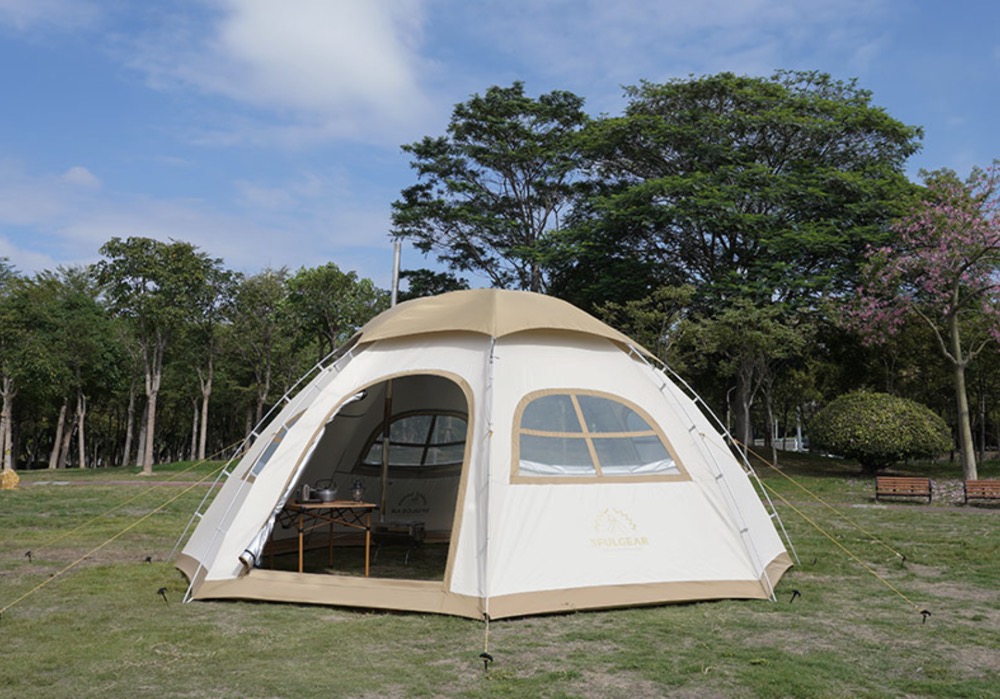
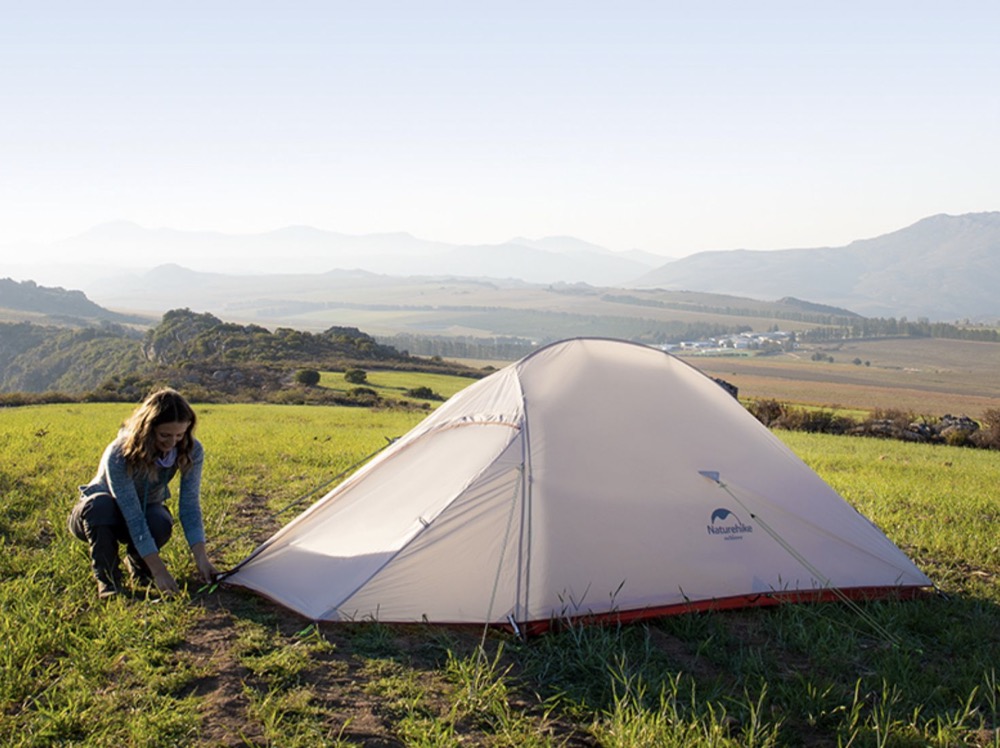
Hiking camping around the city: pyramid tents, fish ridge tents, tunnel tents
This scene is often hiking camping, you need to carry your own tent, so the pyramid tent with light weight is the first choice, and the use of trekking poles is also richer, and the inside of the pyramid tent is relatively high, and it is also very windy to support. The fish spine tent has good wind resistance and is suitable for hiking and camping in the valley or by the sea.
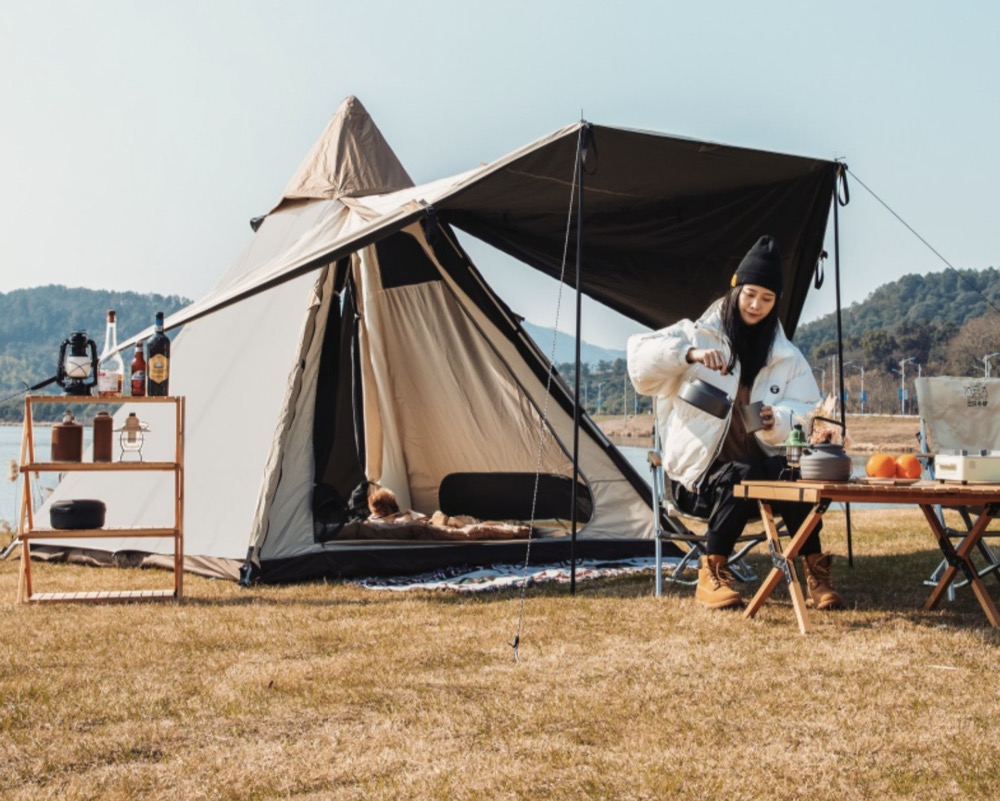
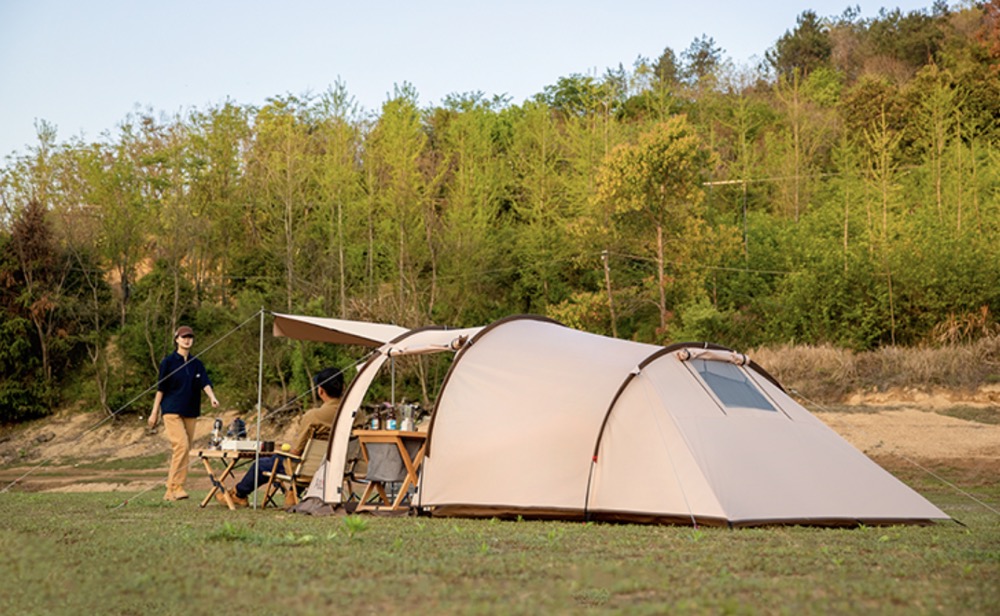
Snowy mountain and plateau trekking camping: fish ridge tents, tunnel tents or geodesic tents
It is mainly used by outdoor enthusiasts in high altitude and low temperature places, and needs relatively strong wind protection and cold resistance.
2、Choice of automatic quick-open tents and manual tents
Many of them on e-commerce platforms recommend automatic quick-opening tents, also called self-supporting tents, which can be automatically stretched on the ground, saving the trouble of their own poles, attractive to novices, mainly used for outdoor leisure occasions.
What scenarios to choose a quick-open tent
The quick-open tent is relatively heavy, self-driving is a must, and it is nothing to put in a campervan. Generally, the park has picnics, camping, and the weather is relatively good, and there will be no strong winds and rain. A normal overnight stay is fine, but bad weather may not be appropriate.
Advantages of quick open tents
It is convenient to open, easy to move, and convenient to put away, and it is generally quite cheap.
Disadvantages of quick opening tents
Not suitable for outdoor hiking, quick-open tents are heavier than tents that typically need to be built by hand, adding an extra burden to backpackers. It is also not suitable for windy occasions, and the quick-opening tent itself requires more support structures, but the materials are very slender, and the ground nails are small and cannot be fixed. The waterproofness of quick-opening tents is generally not good, so it is not suitable for use in rainy weather, and quick-opening tents are easier to damage.
Therefore, if you plan to play outdoors for a long time, then don’t consider opening a tent.
3、How to choose a three-season tent and a four-season tent
The three-season tent is mainly for the three seasons of spring, summer and autumn, and is also a relatively popular style, which can basically meet the needs of ordinary camping enthusiasts, and the product lines of major brands are also quite rich, and the market share is high.
Four seasons tent takes into account all year round, pays more attention to windproof design, has certain thermal insulation performance, lighter weight than alpine tents, more convenient to carry, but because the pursuit of stability will sacrifice some breathability and space, suitable for high altitude or winter outdoor environment, many camping enthusiasts mostly choose this type of tent.
4、Waterproofness of outdoor tents
The waterproofness of outdoor tents mainly depends on the waterproof index:
Waterproof index of 800MM-1200MM tent, can prevent small to medium rain; Waterproof index of 1500MM-3000MM tent, can prevent medium to heavy rain; Waterproof index of more than 3000MM tent, generally is to take high temperature / cold and other technical processing, basically can be used in a variety of environments.
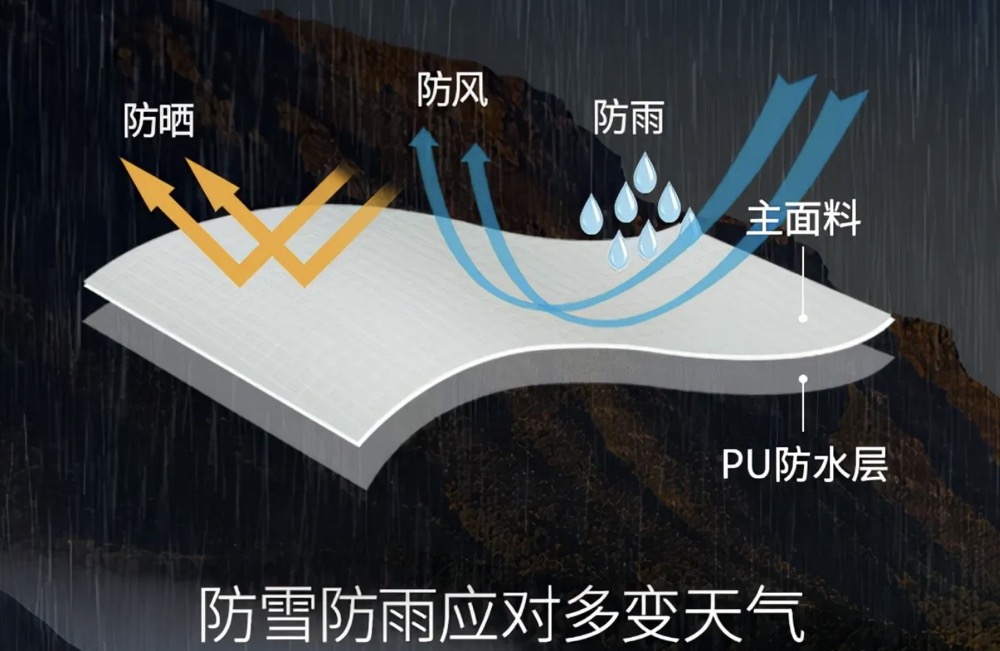
It can also be distinguished by tent type, such as:
The park use of leisure tent, waterproof index within 1000MM can be;
Waterproof index of family camping tent needs to be above 2000MM;
The waterproof index of alpine tent is above 5000MM.
5、Wind protection of tents
This is second only to water resistance, which is determined by shape, weight, and structural strength. The design strength of the poles is critical to resist high winds. In addition, the diameter of the pole, the number of intersections of the pole, the mechanism for hanging the flysheet, the mechanism for attaching the flysheet to the pole, the overall architecture quality, the number and quality of the rope peg are all things to consider. These characteristics are evident when dealing with bad weather. It is also important to note that the windrope hanging points on the sidewalls of the flysheet are often the most vulnerable on the tent. If you often go out to camp, the tent generally needs to block heavy rain and short-term heavy rain, and after the wind direction, ground nails and wind rope are laid, it needs to resist six or seven level winds, preferably above 8 level winds.
6、Ventilation of the tent
The ventilation of the tent is related to the number of doors of the tent, especially when the weather is relatively hot, the outdoor night is not necessarily very cool, if the ventilation of the tent is very poor, the inside will be very stuffy, so be sure to have an insect-proof mesh inner layer. Some tents for hiking will sacrifice comfort, such as fish ridge tents, which are generally single-door and have poor ventilation.
7、Fabric for tents
Tent fabrics are generally divided into: polyester cloth, nylon cloth, Oxford cloth; Generally, nylon fabric is more durable than polyester fabric, and silicone-coated fabric is stronger and more durable than PU fabric.
Polyester cloth, with good elasticity and strength, bright color, smooth feeling, heat resistance, light resistance, not easy to mold, moth, small moisture absorption and other advantages, low temperature environment will not harden, but this fabric is widely used in low-cost tents.
Nylon cloth, light texture, good air permeability, not easy to mold, nylon cloth by applying PU layer to achieve waterproof performance, the larger the value of rainproof performance, PU coating in mm, the current waterproof index is usually above 1500mm, lower than this value do not consider.
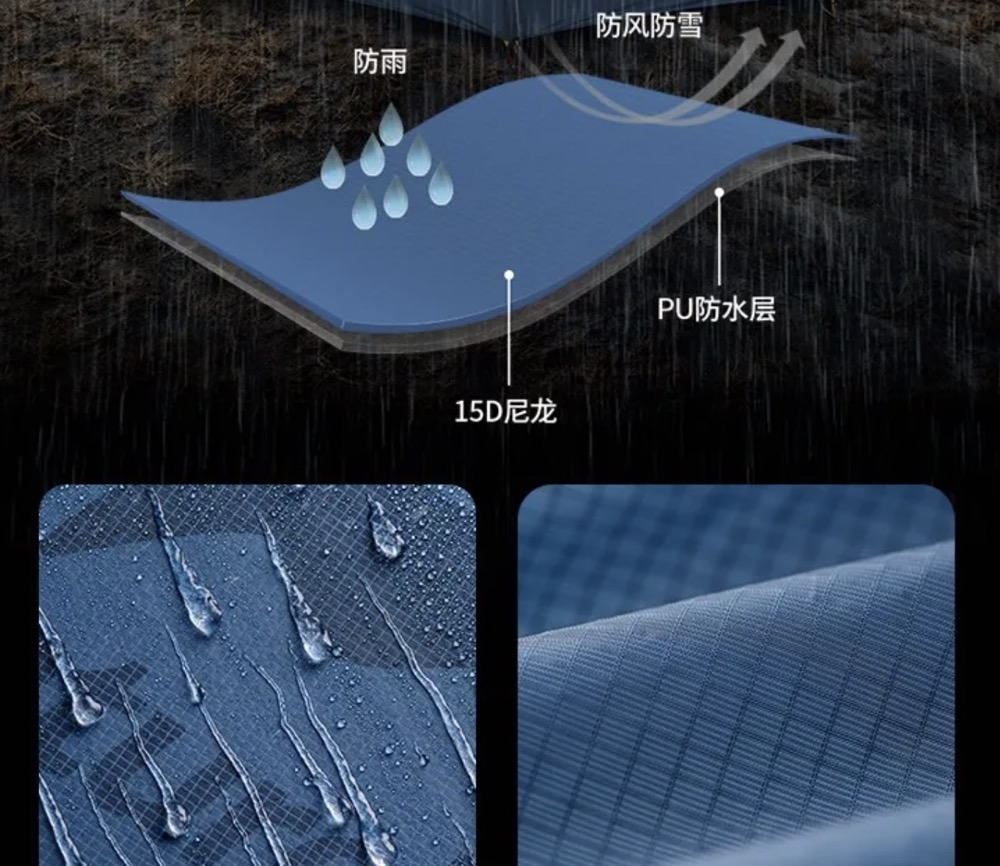
Oxford cloth, primary color fabric, soft feeling, light texture, generally used for the bottom of tents, add PU coating, has good waterproof, easy to wash and dry quickly, durability and moisture absorption are better.
8、The construction and quality of the tent
No matter what kind of tent, it is roughly composed of three parts: tent poles, tarpaulins, and floor nails.
Tent pole: As the main supporting structure of the tent, just like the skeleton of the body, it is the key mechanical component of the entire tent. The body should be made of high-strength steel to maintain the strength of the body, the tent wants to stand, and the strength of the tent pole cannot be low. At present, most of the poles are made of aluminum alloy, which has good wind resistance and is relatively little affected by temperature. PS: Some tents will use fiberglass poles, but we don’t recommend it very much, because the temperature resistance of fiber materials is not ideal, and it is easy to break when used in cold areas.
Tarpaulin: It is the fence structure of the tent, and like the skin of the body, it is all sheltered from the wind and rain. Most of the tarpaulin material is polyester.
Ground nails and wind ropes: can provide auxiliary fixing effect for the tent to ensure the stability of the tent. It secures the tent to the camp by ropes. In general, the more ground pegs are fixed, the stronger the tent is. At present, most tents need about 6-12 ground pegs.
9、Those things about rooftop tents
What is a rooftop tent Rooftop tents are tents installed on the roof, there are soft shells and hard shells, and roof tents generally weigh about 50kg, so once installed on the roof, it is not so easy to remove it.
Rooftop tents are windproof and rainproof, and the inside of the roof tent has a very thick cushion, sleeping very comfortable, secondly, the opening and storage of the roof tent are very convenient, 3 minutes can be opened, 2 minutes can be stored, in fact, this is also the biggest advantage of the roof tent.
The roof tent is equivalent to fixing the tent on the roof, which is very convenient to use, in addition, the roof tent is a certain distance from the ground, which will be safer in the wild, and the moisture-proof effect is much better than the ground tent. When driving self-driving, if you encounter heavy rain on the way, then the roof tent has a very large advantage, as long as the vehicle is parked, and then pull the roof tent to sleep, and the ground tent In addition to parking the car, you also have to consider the ground of the tent, sometimes, some places can only park and there is no tent camp, which is very painful, and in the rainstorm, setting up a ground tent is a very painful thing.
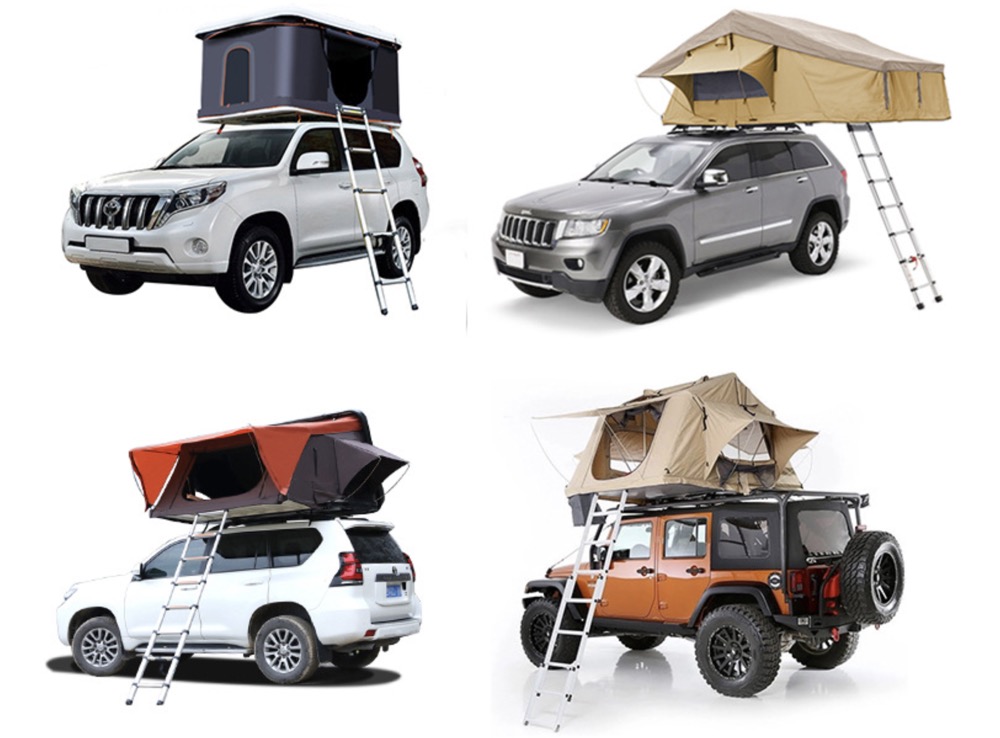
Disadvantages of rooftop tents
The disadvantages of rooftop tents are also obvious, after adding roof tents, the car body will become higher, and we must consider the height limit of the basement or some special road sections. In addition, after installing a rooftop tent, there will be slight wind noise on the highway, and it will be relatively troublesome to clean. The most important point is that rooftop tents are more expensive than ordinary tents, most of the rooftop tents on the market are in the range of 5000-15000, rooftop tents are indeed very convenient, but can only be used with the car, and once installed, it is not easy to disassemble. Therefore, how to choose specifically depends on your own preferences. If you are a pure road travel enthusiast, then I recommend buying it.
10、Cleaning of tents
Tents are generally dirty when used for a period of time, and they need to be cleaned, otherwise it will affect the waterproofness of the tent. Tent cleaning can be done with laundry detergent, preferably with professional outdoor gear cleaning agent to help restore the original fabric’s waterproof and breathable properties. When the stains are thoroughly washed, you’ll also need to put on clean water and put the finishing touches on your tent. Next, you can hang it in the bathroom or on a clothes rail to dry.
I would like to remind everyone that you should not expose the tent to the sun, and direct ultraviolet rays will cause certain damage to the freshly washed tent fabric.

